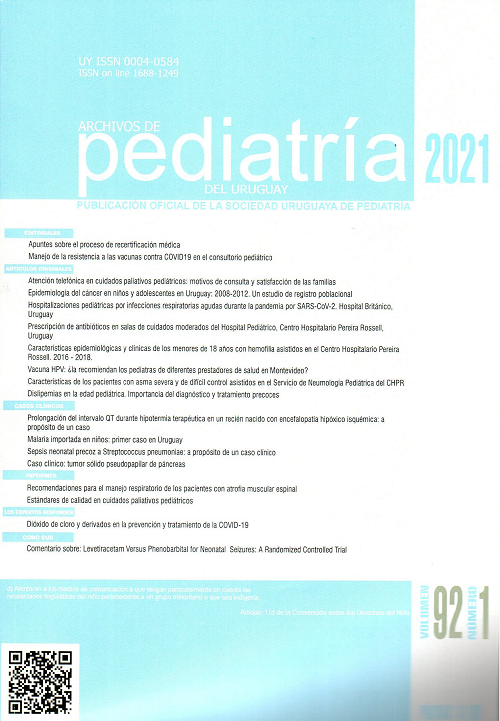Abstract
Introduction: hemophilia is a hereditary disease, linked to chromosome X and caused by the deficit of factor VIII (type A) and IX (type B). Estimated prevalence at birth is 24.6 cases every 100,000 boys for hemophilia A and 5 cases every 100,000 cases for hemphilia B. The Transfusion Medical Department (TMD) of the Pereira Rossell Children’s Hospital Center (CHPR, acronym in Spanish) is the national reference center (NRC) for patients under 18 years of age. A comprehensive, inter-disciplinary approach to hemophilic patients at a specialized center decreases morbidity and mortality and contributes to improving quality of life.
Objective: to describe the epidemiologic, clinical and progression characteristics of hemophilic patients of under 18 years of age assisted at the TMD-CHPR between January 1st 2016 and December 31st, 2018.
Methodology: descriptive, retrospective study of all hemophilic patients of under 18 years of age. Variables described: age, circumstances of diagnosis, type and severity of hemophilia, health check-ups, tests, complications, frequency and reasons for hospital admittance, treatment. The study protocol was approved by the Institutional Ethics Committee.
Results: 67 patients were assisted, 57 with hemophilia A and 10 with hemophilia B. Median age was 8 years. Severe hemophilia was present in 61 patients, moderate in 2 and mild in 4. 41 had a family history of coagulopathy. Median age at diagnosis was 2 months. 24 patients with hemophilia A and 5 patients with hemophilia B were diagnosed during the neonatal period. 7 patients developed inhibitors, all of them with severe hemophilia.
Conclusions: in this study there is a predominance of patients with severe hemophilia A, known family history of coagulopathy, under prophylactic treatment with coagulation factors. This study provides valuable information about the characteristics of these patients, which contributes to improved clinical management and planning strategies to improve their quality of care.

